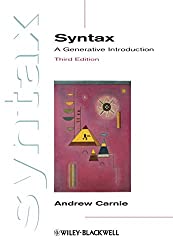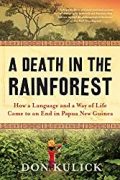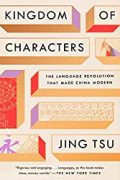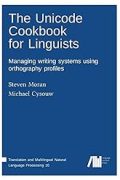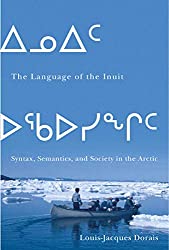
Rating: 7.8/10.
Academic book describing various aspects of the Inuit languages, spoken by about 110k aboriginals in Alaska, Northern Canada, and Greenland. The Inuit languages are part of the Eskimo-Aleut language family, whose homeland is around the Bering Strait. The Aleut (Unangax) language is the most divergent, followed by several Yupik languages in Siberia and Alaska that have about 50% lexical overlap with Inuit. Finally, the Inuit languages include Inuktitut (Canada), Inupiaq (Alaska), and Kalaallisut (Greenland), with about 16 dialect groups that are mutually intelligible. Most of the differences are phonological, although East Greenlandic has a divergent lexicon.
The section on syntax is quite brief, just a quick glance at some inflectional endings of the Nunavik dialect. The language is polysynthetic with lots of affixation (some lexical) and noun incorporation. Nouns have cases and distinguish between singular / dual / plural. The similarity among Inuit dialects indicates that the group spread around the Arctic fairly quickly, around 1000 years ago.
Inuit word lists were first collected in the 1500s and later by explorers and missionaries, allowing us to see how the language evolved. Generally, dialects with European contact tended to undergo more change, frequently simplifying consonant clusters. This made the first and second person inflection homophones, leading to an explicit pronoun uvanga / ivvit to disambiguate. However, Inuit morphology lets them construct new words naturally from existing stems, so borrowing of vocabulary is low. The same word-internal structure allows us to examine the derivation of lexical items, which offers interesting insights into the Inuit worldview, like the relation between men and women as parallel to the hunter and his game.
Recently, bilingualism with English (and Danish in Greenland) has become widespread in the Inuit population. Most Inuit can still speak their language and are literate, but many find it easier to use English in many contexts. Education tends to be bilingual with English being dominant after grade 3. Language preservation is best in Greenland, where Kalaallisut is still used in most places, and worst in Alaska, where the population became monolingual English speakers in 60 years. English is still the more useful / practical language, but the Inuit consider their language a strong part of their identity (especially after the formation of Nunavut).
